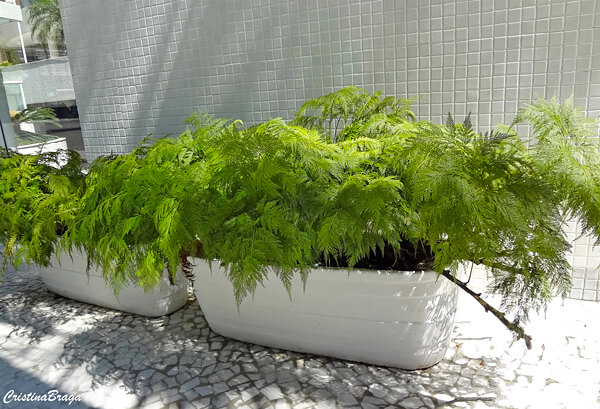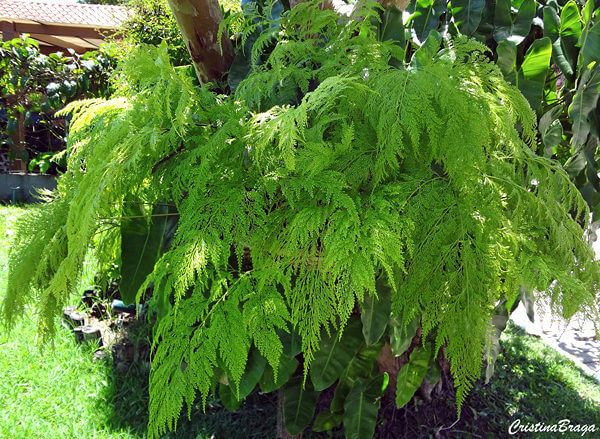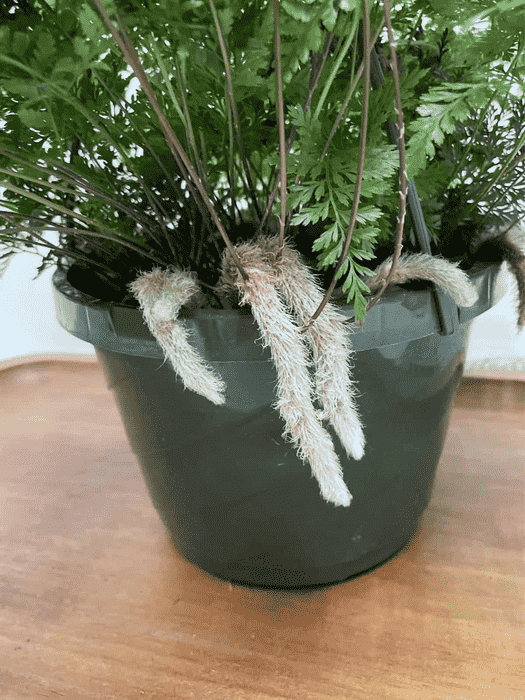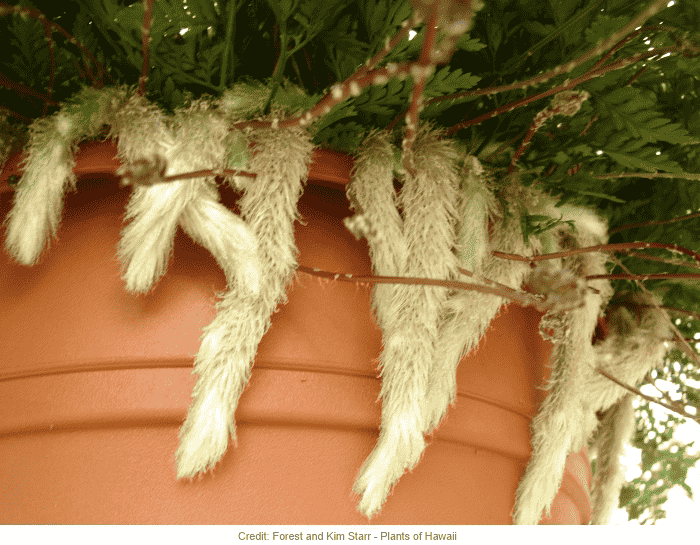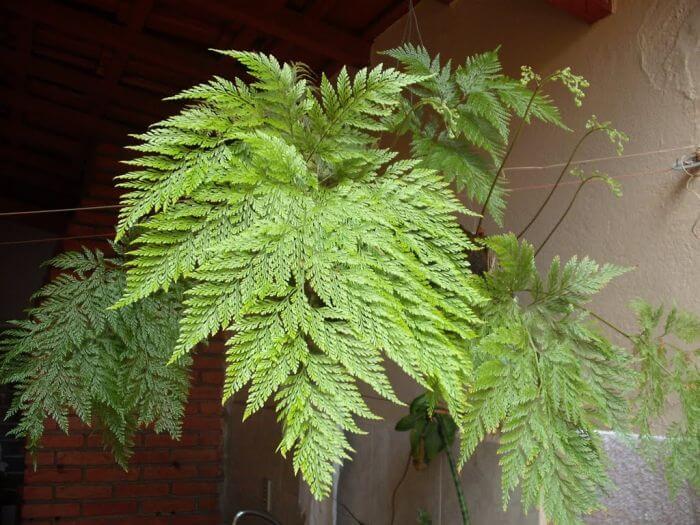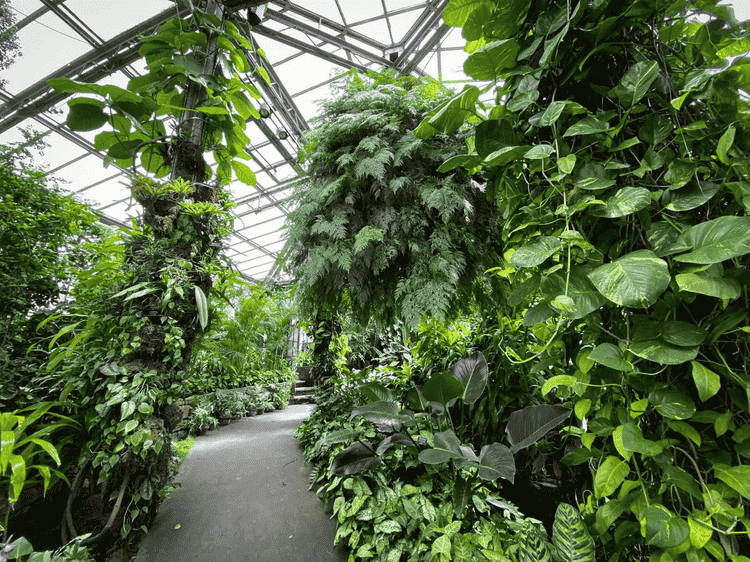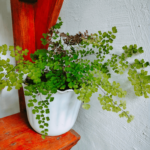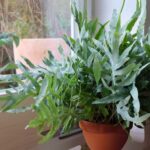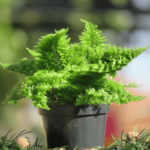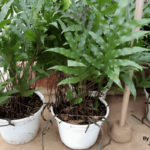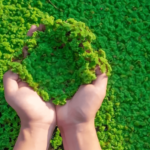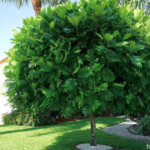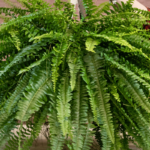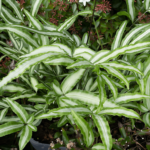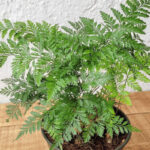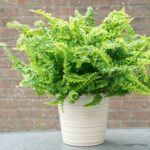The rabbit’s foot fern is a plant that has captured the hearts of many cultivators.
The beauty of its leaves and roots, along with its easy cultivation, make it a popular choice for indoor or garden settings.
If you already have or plan to acquire this fern, keep reading this article as you will learn about its curiosities, characteristics, and, most importantly, how to cultivate it correctly.
How to Care for the Rabbit’s Foot Fern
Among the various fern options you can cultivate in your home, this species is probably one of the most beautiful and resilient choices.
To cultivate and keep it healthy year-round, you need to follow these care guidelines:
- Provide a warm and humid climate, avoiding placing it in windy locations.
- Place it where it is protected from direct sunlight and receives plenty of indirect light.
- Offer a substrate rich in organic materials with good drainage.
- Fertilize during the growth season with fern-specific fertilizers.
- Perform replanting and propagation at the right times.
- Avoid pests and diseases.
Below, we will explain each of these care guidelines in more detail, including why the plant’s leaves may turn yellow and fall during winter.
Where to Cultivate
The rabbit’s foot fern is a tropical plant that can be cultivated indoors or outdoors, with outdoor cultivation recommended in regions where winter is not too severe.
When choosing where to place your Davallia solida var. Fejeensis (the scientific name of this species), consider the following:
- Avoid placing it near drafts or heaters, as this plant dislikes excessive ventilation.
- Avoid direct sunlight: place it where it receives indirect light.
- Maintain good humidity since ferns, in general, thrive in humid environments.
This plant can be placed in various locations within your home or garden. Common options include:
- Indoors: bathrooms, stands, shelves, bookcases, near windows, living rooms, garages, and terrariums.
- Outdoors: vertical gardens, hanging pots, under trees, and balconies.
As for the pot you will use, ferns were traditionally planted in tree fern pots, which provided ideal conditions for these plants.
However, over time, tree ferns have become endangered, and alternatives such as plastic, clay, or coconut fiber pots are now necessary. Remember that the ideal pot for the rabbit’s foot fern should be wide and shallow, as its roots are small.
Read too:
- Monarch Fern – How to Care and Propagate
- Ribbon Fern or Cretan Brake Fern: How to Plant and Care
- Japanese Fern Tree – How to Care and Characteristics
- How to Care for Ferns in 9 Steps (For Beginners)
Humidity
Ferns, in general, thrive in high humidity, and the Davallia solida var. Fejeensis is no exception.
Although it has higher humidity tolerance compared to other ferns, it still thrives in a high-humidity environment. You may notice your plant suffering from low humidity when you see browning on the tips of its leaves.
To increase humidity, you can:
- Mist the leaves in the morning on dry days.
- Place a tray with rocks and water just below the fern’s pot. Ensure the pot rests on the rocks without submerging in water, as this can rot the roots.
- Position it near plants that increase ambient humidity.
- Use a humidifier.
Watering
The rabbit’s foot fern enjoys plenty of water, but cannot tolerate waterlogged soil.
When watering is not done correctly, you may observe problems like yellowing and gradually drying leaves or rotting roots.
CAUTION: If you notice yellowing leaves during winter, do not worry; this is normal, and we will explain the reason below in this article.
To water your rabbit’s foot fern, insert your finger about 1 inch (2.5 cm) deep into the substrate to check if it is still moist. Water should be applied shortly before the soil completely dries out.
During the growth season (from spring to late autumn), watering will be more frequent.
Ventilation and Lighting
Placing your plant in a closed and stuffy environment is a bad idea and can lead to pest and disease issues.
Areas with too much wind can stain your fern’s leaves and hinder its growth.
Ideally, place it where it is sheltered from drafts but receives gentle ventilation.
About lighting, this is a part-shade plant.
In other words, it enjoys good lighting but cannot tolerate direct sunlight.
Exposing it to direct sunlight can:
- Burn its leaves.
- Interrupt the growth of new shoots.
- Cause the rhizome to turn dark brown.
Therefore, provide indirect lighting for this plant.
Temperature
If you live in regions where winter is not too harsh, you probably won’t encounter significant difficulties regarding temperature.
However, in colder climates, especially below 55°F (13°C), your fern’s leaves may start to yellow and fall. This is common during winter, but don’t worry; new leaves will emerge in spring.
The ideal temperature range for these ferns is between 59°F to 77°F (15°C to 25°C). In higher temperatures, take care to shield it from direct sunlight and maintain high humidity in the environment.
Substrate
Choosing the right substrate for planting your fern will aid its development and help prevent issues like root rot.
The ideal substrate for Davallia solida var. Fejeensis should have a neutral pH of 6.5 to 7.5. It should be rich in organic matter, provide good aeration to the roots, and ensure proper drainage.
Materials that can be used in your substrate include:
- Sphagnum peat moss.
- Worm castings (vermicompost).
- Perlite (for added drainage).
- Fern-specific substrates.
- Topsoil.
- Sand.
- Tree bark chips.
- Charcoal.
- Coconut coir.
- Expanded clay pellets.
In addition to pre-made fern substrates, another highly recommended mix is 2 parts peat moss, 1 part perlite, and 1 part sand.
Fertilization
Despite not producing flowers, ferns benefit from proper fertilization.
The rabbit’s foot fern should be fertilized during its growth season, which is from early spring to late autumn.
During winter, it enters a dormant period, and fertilization is not necessary.
During the growth period, you can use either organic or chemical fertilizers.
Chemical fertilizer options:
- NPK 12-08-06.
- NPK 10-10-10.
- Fertilizers specifically designed for ferns.
Organic fertilizer options:
- Castor bean meal.
- Bone meal.
- Worm castings (vermicompost).
- Eggshells.
When using chemical fertilizers, be very careful with excess nutrients.
Follow the instructions on your fertilizer’s label, and if you can’t find specific information for ferns, you can use 1/4 strength every 2 weeks or 1/2 strength once a month.
Regarding organic fertilizers, just be cautious if you are cultivating your fern indoors, as some of these fertilizers can release unpleasant odors.
Replanting
The rabbit’s foot fern has furry rhizomes (pictured below) that, as the plant grows, expand beyond the pot. This is normal and does not mean it needs to be replanted.
Typically, replanting is done every 2 or 3 years when your plant outgrows its current pot, and many of these rhizomes are extending outside. To replant your rabbit’s foot fern, follow these steps:
Materials needed:
- A new pot for your plant, which should be 1 to 2 inches (2.5 to 5 cm) wider than the previous one.
- A sterilized and sharp pair of scissors suitable for plants.
- New substrate.
How to replant your rabbit’s foot fern:
- Perform the replanting during spring; this is the best time.
- Remove your fern from the old pot and clean its roots.
- Fill the new pot with fresh substrate.
- Plant your fern, but take care not to plant it too deep, as it has shallow roots.
- Keep the furry rhizomes above the substrate. They should never be buried, as this will cause them to rot.
During replanting, it’s possible to propagate your Davallia solida var. Fejeensis by dividing clumps; this procedure will be explained below.
Propagation
Ferns do not produce seeds; therefore, they can multiply through their spores (those tiny dots on their leaves) or by dividing clumps.
Below, I will explain these two methods in more detail.
Clump Division
Usually, this division is carried out along with the repotting process.
So, remember that the best time to divide your fern is during the spring.
Basically, in this procedure, you will cut a portion of your fern’s rhizome so that it sprouts and generates a new plant.
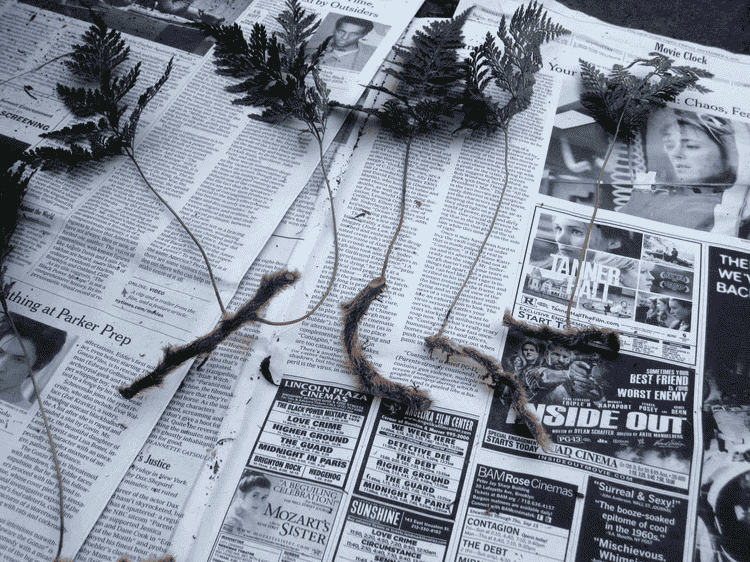
Below is the detailed procedure:
- Choose a rhizome to cut: pick a darker rhizome with one or two leaves, at least 5 to 7.5 cm long, with the ideal length being around 15 cm. You can also use rhizomes that break during the repotting process.
- Make the cut: remember to use a sterilized pair of scissors.
- Place it in a pot: the substrate should be moist and rich in organic matter. Ensure that the rhizome is in frequent contact with the soil. If necessary, secure it with a small string or bury it halfway.
- Cover the container with plastic: this will maintain good humidity. Also, place it in a location with plenty of indirect light.
- Remove the plastic daily: to ventilate the environment and prevent mold.
- Wait for new leaves: on average, after 3 or 4 weeks, you may notice root growth and the appearance of new leaves on the rhizome.
There you have it; you’ve obtained a new plant.
Avoid fertilizing this new plant during its first few months of life, and also refrain from doing this procedure frequently, as rhizomes are essential for the development of your rabbit’s foot fern.
Propagation by Spores
Propagating ferns from spores is a challenging task that requires a lot of patience. If you want to multiply your fern, I recommend division of clumps.
But, for educational purposes, if you want to germinate the spores of your fern, do the following:
- Examine your fern’s leaves for spores.
- Scrape the dark spores and place them on a piece of paper or in a clean container.
- Put the spores on a pot with damp soil rich in organic matter. There’s no need to cover them with soil.
- Cover the container with plastic to increase humidity.
- Place the container in a location with plenty of light but without direct sunlight.
- The soil should remain moist but not waterlogged throughout the germination process.
- Germination takes between 2 and 3 months.
Common Issues with Rabbit’s Foot Fern
Over the years of cultivating your fern, it’s common to encounter problems that can affect the health or appearance of your rabbit’s foot fern.
Especially when your care is incorrect, your fern will exhibit some signs that can help you identify the issues.
Below are the main signs your fern might exhibit and their primary causes:
- Yellow leaves with brown tips: the climate is too dry, or the temperature is too high.
- Pale leaves and stunted growth during the growing season: lack of fertilization, excess watering, or issues with the climate (insufficient or excessive lighting, too low temperatures).
- Chewed leaves: caterpillars are attacking your fern.
- Light-colored and faded leaves: too much direct sunlight.
- Dark spots on the leaves: root rot.
- White spots on the leaves: mealybugs.
- Burnt leaves: chemicals, tobacco smoke, or scented candles can cause this issue.
Additionally, various pests and diseases can affect your rabbit’s foot fern.
The most common ones are: mealybugs, mites, flies, aphids, root rot, trips, etc.
Leaves Falling During Winter
Especially for outdoor plants, when winter arrives, it’s common for the leaves of the rabbit’s foot fern to start turning yellow and fall off entirely.
If this happens to your plant, don’t worry.
If the leaves don’t fall entirely, it’s recommended to trim them to stimulate the growth of new leaves when spring arrives.
Remember to use sterilized scissors for pruning.
Identifying Davallia solida var. Fejeensis
To identify your rabbit’s foot fern, you need to understand that it has some unique characteristics that set it apart from other fern species.
First, let’s start with the most striking and distinctive part of this species, its rhizomes.
Often confused with roots, rhizomes are crucial for expansion and for storing water and nutrients.
It’s interesting to note that they’re responsible for the affectionate nickname ‘Rabbit’s Foot Fern.’ This is due to their resemblance to rabbit paws, thanks to the presence of hairs that cover these structures.
They typically have a brownish-yellow color.
In addition to the rhizomes, another very important part of this plant is its leaves.
Growing from the rhizomes, the leaves are large; they have a triangular shape reminiscent of lace and are either light green or dark green.
As for its branches, they are dark brown and twisted, and they appear sparingly due to the size of the plant’s leaves.
While researching for this article, I found information from various sources indicating that this species varies in height from 50 cm to 150 cm, depending on its age and cultivation.
However, at Longwood Gardens, you can find a fern of this species that is over 70 years old and has a diameter of 9.5 feet (about 290 cm), clearly surpassing the 150 cm height measurement.
Your fern will likely range from 50 cm to 150 cm in height, but it’s worth noting that its height can be much greater when the species is well cultivated over a long period of time.
Characteristics and Curiosities
Currently, the correct classification for this fern is not Davallia Fejeensis, but rather Davallia solida var. Fejeensis. Besides this one, there are also several other species that are commonly referred to as rabbit’s foot ferns.
- Davallia canariensis
- Davallia tyermannii
- Humata tyermanii.
It is found in the humid forests of the Fiji Islands and New Zealand, and it typically grows on trees or in rock crevices in its natural habitat.
The name Davallia pays tribute to the Swiss botanist Edmond Davall.
Here are some other interesting facts about this plant:
- It is not toxic to dogs or cats.
- It helps purify the air.
- It is one of the easiest ferns to cultivate.
- They can live for decades.
Conclusion
Davallia solida var. Fejeensis is an excellent choice for any beginner gardener who wants to have ferns in their home.
By following the tips in this article and, most importantly, taking care of your plant with love and care, I’m sure your rabbit’s foot fern will be beautiful, healthy, and long-lasting.
And if you want to learn more about cultivating other fern species, check out the other articles we’ve written on fern cultivation.
- Marisa Fern: 7-Step Growing and Care Guide
- Nephrolepis exaltata (Boston Fern) – How to Grow and Care
- Leatherleaf fern – Care, Characteristics and Curiosities
Liked the article? Then share it on your social networks and leave your comment below.


